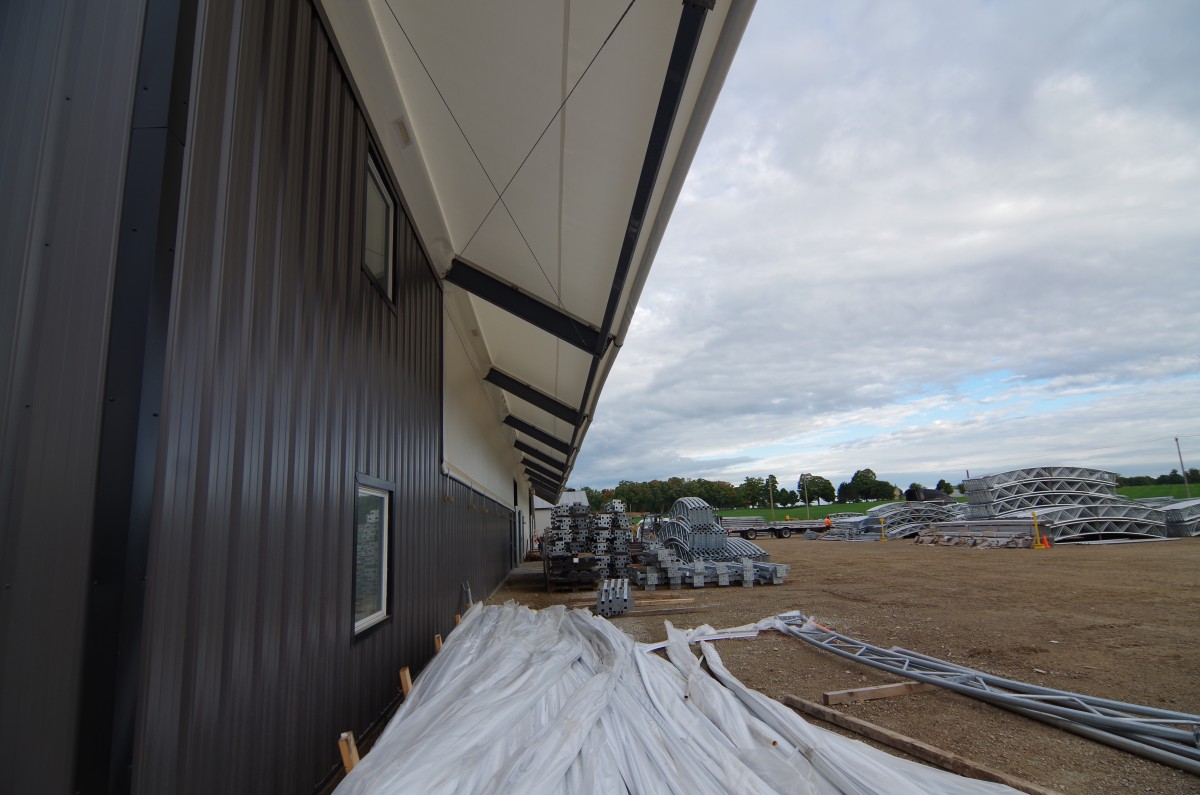By: Robert Lee
A quick look at today’s polyfabric buildings – from air-reinforced inflated recreation centres to monstrous stretched canopies covering stadiums – tells us that this is new, innovative technology that only is possible because of recent inventions in specialty fabrics. “Space-age”, we think. Wrong. Tension-fabric buildings actually pre-date the iron age. It is only the substantial engineering advances that are modern. The idea is ancient, proven, and reliable. Oddly, it is reliability that most often comes into question when we look at and consider buying our own fabric-covered structures.
History of Polyfabric Buildings
Think of the yurt, or ger, that has found a huge following in North American parks and campgrounds over the past three decades. Many of us see it in connection with the Mongols of Genghis Khan, from 1162. Yet, gers were common around the Black Sea around 600 BC and earlier, withstanding extremes of cold and wind without failing. These were the original, true stretched-skin tension buildings, with furs or felt wrapped tightly around a frame of branches. Their design called for a minimum of material while offering great strength and durability. The North American First Nations teepees are excellent examples of tension-fabric structures and could withstand extreme environmental conditions while being sufficiently versatile to allow for frequent dismantling and re-erection over numerous years.
The doors that opened for modern tension-fabric buildings came during World War II, with the introduction of Quonset steel or aluminum buildings used as utility, storage, or housing buildings. Shortly afterward, advances in use of natural gas, or off-products from the petroleum industry, along with the development of plasticizers, enabled the use of PVC in such applications.
Even the common, unobtrusive tent is a form of the tension-fabric building with limited applications.
Growth of Polyfabric Buildings
Because of the supposed novelty of poly-fabric buildings, many jurisdictions only reluctantly embraced the qualities and advantages of these creations. They have proven to be popular farm buildings, primarily because the building codes for farm building are more relaxed than for urban housing and commercial buildings. Yet, engineers have scrutinized these fabric structures — some of the most proven, advanced, and unique architecture around the world.
Eat Street Project at Westfield Shopping Centre (London, UK), Grand Pavilion (Melbourne, Au), and the Santa Fe Opera House (USA) are just a few examples. The Qatar inflatable fabric dome is a great example of a habitable tension-fabric structure, as is the Vectorfields Frank Kim residence. These are more artworks than traditional buildings, however.
It is in the huge gap between these true works of art and the basic Quonset in which the most efficient and practical applications of poly-fabric buildings occur. Airport hangars, storage buildings for large equipment and supplies, temporary bulk housing, and even machine or workshops all become more cost-efficient when fabric buildings are involved.
Building Evolution
In a strange way, tensioned fabric buildings have evolved in a circular manner, originating with available raw materials such as skins and poles, through free-standing polymer structures relying entirely on internal tension to allow for artistic expression, to minimalist designs that offer greater strength, durability, weather and chemical resistance and lower cost than conventional wood, steel or concrete buildings. These new, simple yet solid designs reflect and integrate more of the basic principles of their ancestors – yurts and teepees – than the modernistic creations that immediately preceded them.
The low cost now becomes one of their key advantages, while also allowing for installation in almost any extreme of the environment on earth, and in harsh conditions where chemicals, weathering, and structural stress weaken other buildings much more rapidly than the poly-fabric designs. However, unlike their Mongol ancestors, these new buildings are virtually unlimited in size and fit almost any need. With proper engineering oversight, fewer and fewer jurisdictions impose onerous restrictions on their installation, since, unlike temporary garages, party tents or other budget — and low-quality products, a decent poly-fabric tension structure often exceeds standards of any comparable house or commercial building.
These buildings are a far cry from the old canvas over pole army camp building. You can now find them on even the most sophisticated and technologically advanced armed forces base, thus proving workers recognize them as a high-quality, high-reliability structure. In fact, much like the old Genghis Khan yurt.




